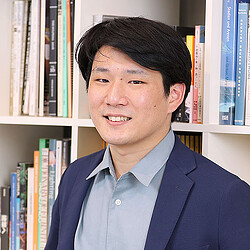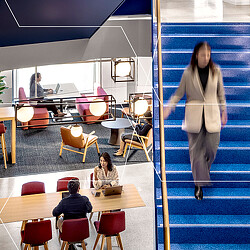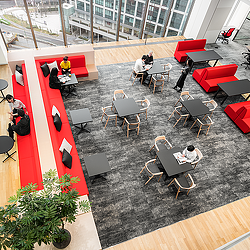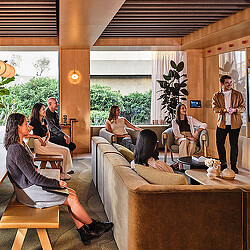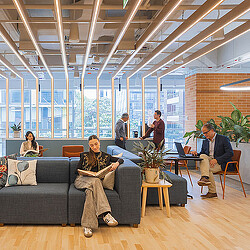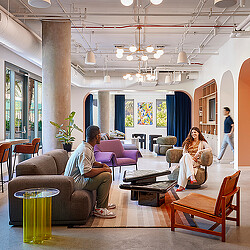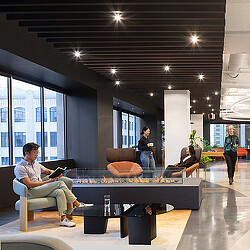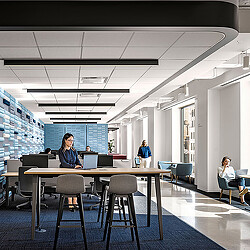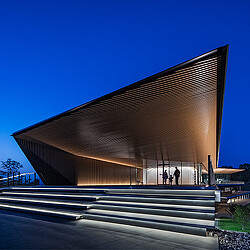Why Japan’s Workplace Trends Are Moving Against the Global Current
How companies in Japan can adapt their workplace solutions to counteract the country’s stagnating office experience.
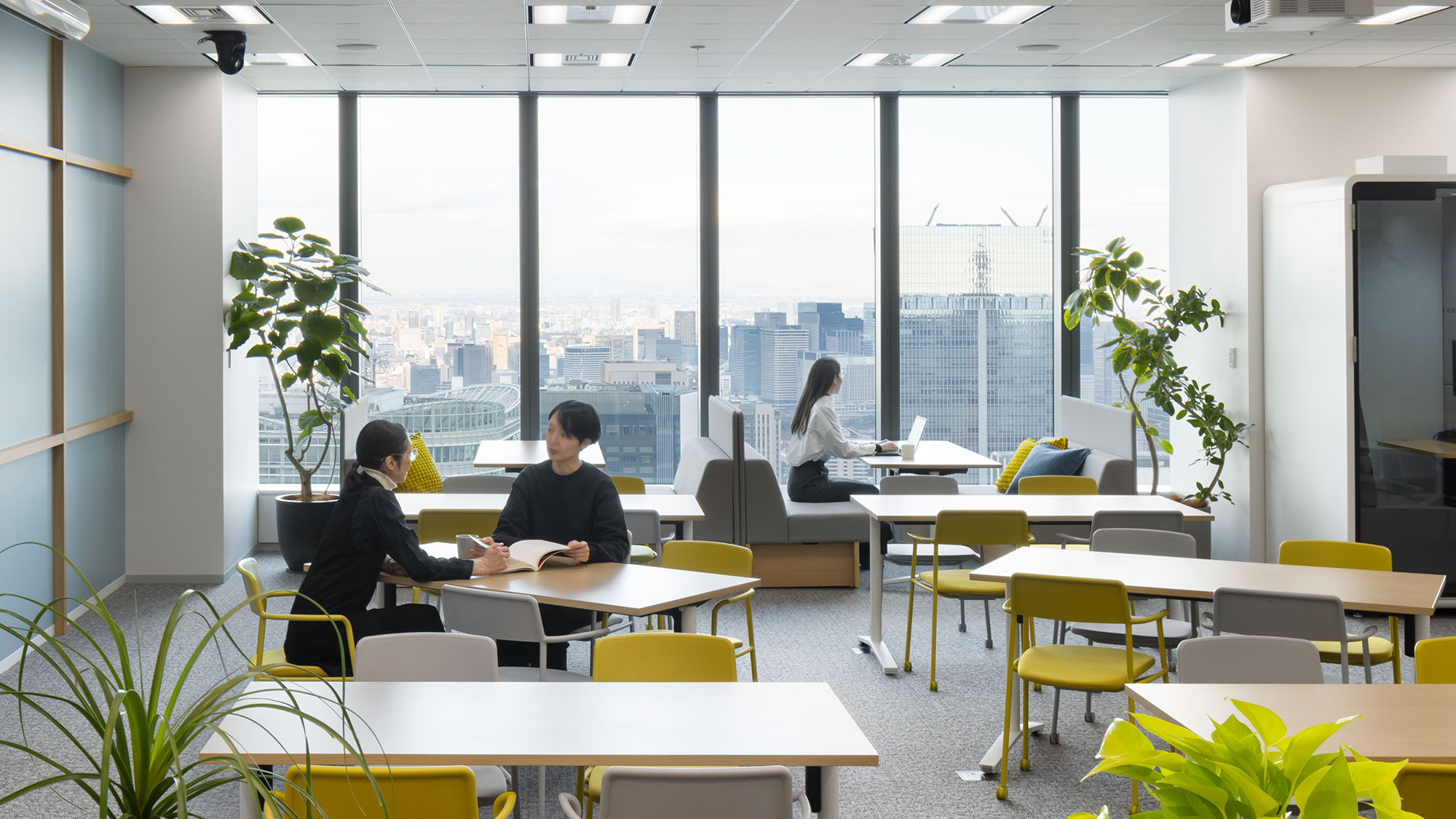
According to Gensler’s Global Workplace Survey 2025, collaboration is on the rise across many workplaces surveyed, especially when compared to pre-pandemic patterns. People are spending less time working solo, more time engaging, and social interactions are on the rise — strengthening culture and community.
Yet, in Japan, our workplace data tells a different story. Of all the countries we surveyed, Japanese workers reported the most time spent working alone during a typical work week. Explore our interactive graphic here.
Here in Gensler’s Tokyo office, we found these findings surprising and a little disappointing. Since the pandemic, we’ve helped countless companies design spaces that spark collaboration and innovation. So why is Japan bucking the global trend? Discovering why taught us a powerful lesson about Japan: when design, knowledge, and iteration come together, workplaces thrive — and so do the people inside them.
Shifting Work Patterns in Japan
In Japan, workers have returned to a level of 50% “working alone” time — a figure last seen in 2016. This shift has coincided with a decline in workplace effectiveness across all five work modes — including working alone — with 2025 scores falling below 2024 levels and nearing their 2016 lows. In short, offices here aren’t supporting the basics of business.
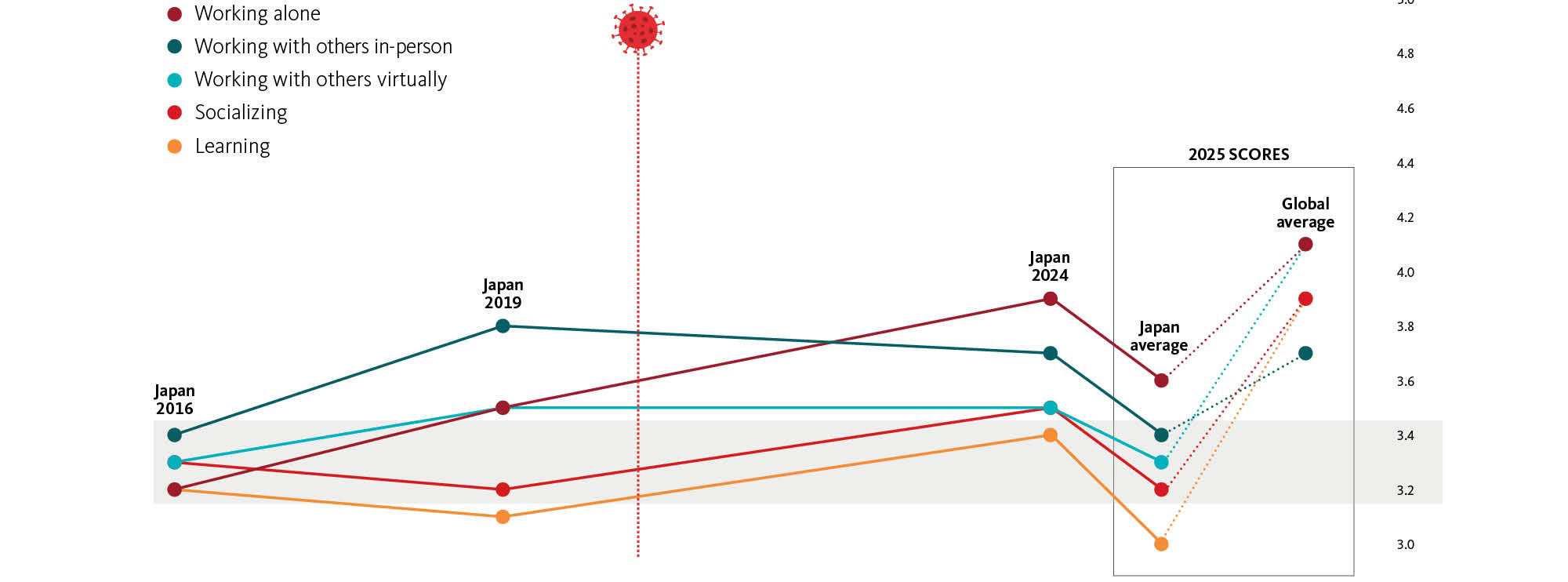
So, what’s behind this shift? And more importantly, what can workplaces in Japan do to turn the tide?
The Only Country Saying: “Less Office, More Productivity”
Perhaps the most striking finding is that Japan is the only country where employees believe they’d be ideally more productive spending less time in the office. Everywhere else in the world, workers see the physical workplace as essential for maximizing individual and team productivity. But in Japan, workers prefer spending less time in the office, compared to their current time spent. Japan’s workers also spend the most time in the office globally — so, despite the collaborative benefits, they still want to spend less time there.
Let’s be clear, this isn’t about preferring the comforts of home. Workers in Japan are saying their offices are so ineffective that they feel being away helps them perform better, despite any collaborative or social benefits they might miss out on by being physically present. What’s broken in Japanese workplace design — or culture — that makes employees feel more productive away from the office?
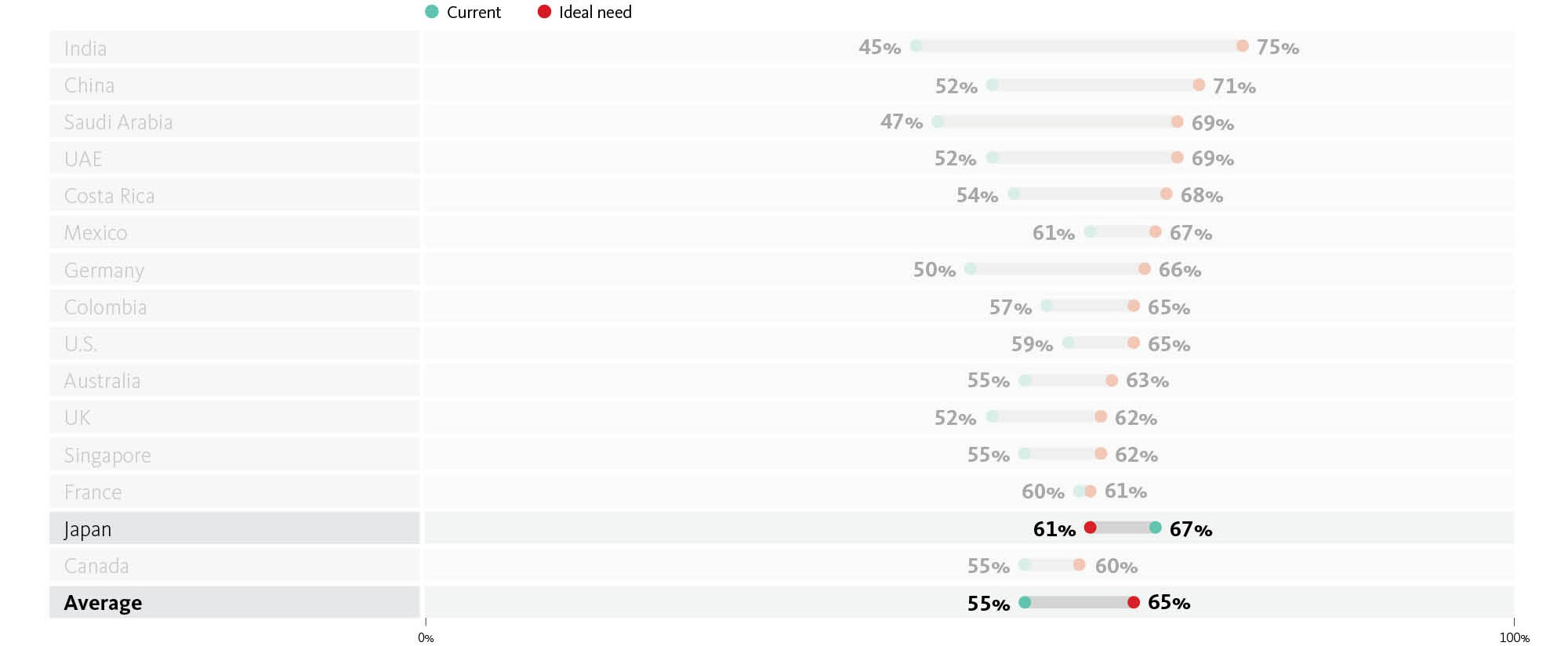
The Power of Workplace Experience
One answer lies in analyzing how people feel about their workplace experience. Among Japanese employees who report a great workplace experience, the story flips:
- All work modes improve (instead of declining for those who report a “not great experience”)
- Collaboration and socializing rise (instead of isolation)
- People want more time in the office (not less)
The issue isn’t that Japanese workers don’t value the office — it’s that too many aren’t experiencing a great one.
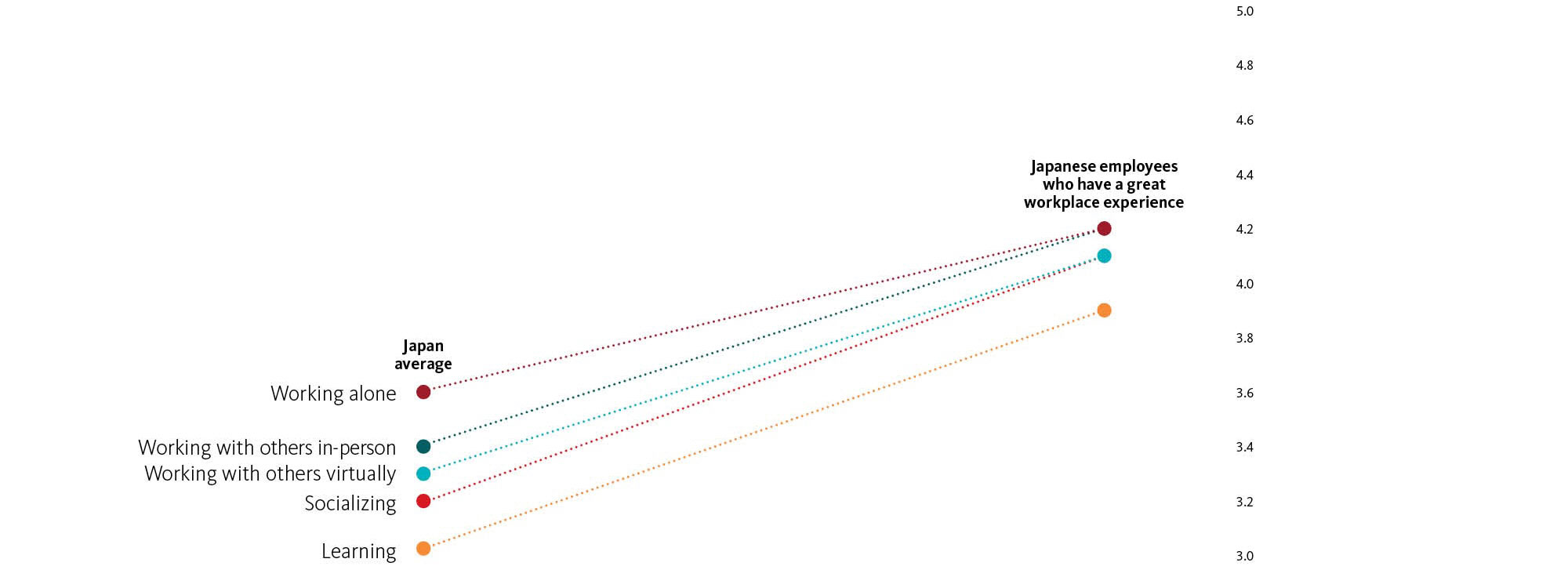

Japan’s Workplace Experience Scores
The data is stark: only 42% of Japanese workers report that their workplace offers a great experience — the lowest globally among those we surveyed, second only to France (63%), and a staggering 30 percentage points below the global average of 72%.
Yet, when Japanese employees do encounter a well-designed, thoughtful workplace, the impact is just as strong — sometimes stronger — than in other markets.
Why Variation Matters
One factor is the variation of spaces. Employees with a great workplace experience in Japan report more variety — ranging from quiet library settings to active, creative labs.
Interestingly, Japanese workers don’t overwhelmingly favor buzzing, collaborative spaces. Instead, balance is key. A mix of lively hubs and quiet zones gives people choice, which is essential for both working alone and working with others to get work done.
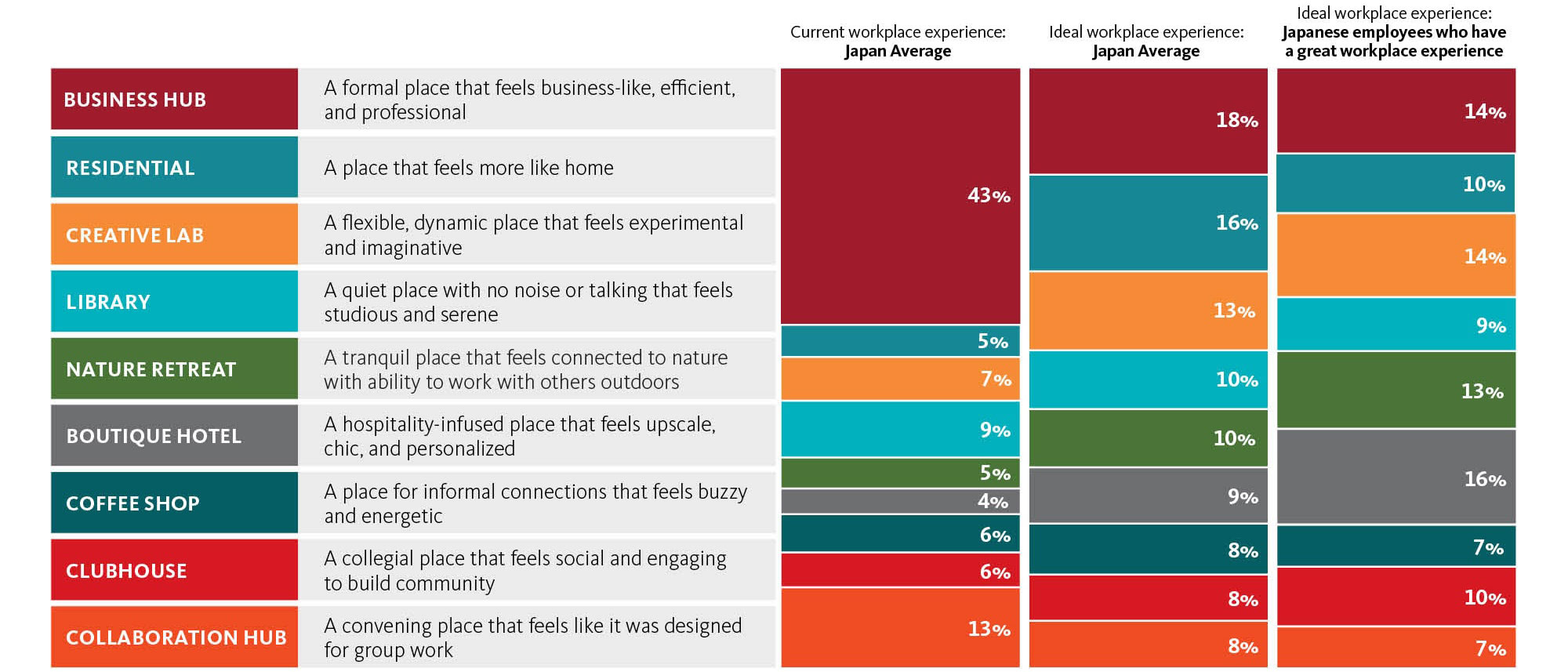
Beyond Design: Knowledge and Kaizen
At Gensler Tokyo, we believe design alone isn’t enough. Workplace knowledge — helping employees understand how to use a space — is just as critical.
Traditional change management can be powerful, but nothing beats the experience of actually occupying a workplace. That’s why testing matters: it lets employees experience new ways of working, provides feedback, and allows an opportunity for continuous improvement.
By testing different ways of working, companies can give employees a chance to try out new setups firsthand, while also spreading knowledge about how to use them. Just as importantly, these studies generate real-time data and feedback that can be analyzed and refined — mirroring the Japanese concept of Kaizen, or continuous improvement - incremental changes, tested and refined.
In this way, staff are prepared for change — by actively improving both workplace knowledge and workplace experience, making each iteration of the office smarter, more responsive, and more effective than the last.
This especially relates to the high expectation for hospitality (in Japanese, Omotenashi) for any space that will greet and engage people. Employees expect a high level of convenience, continuous, clear communication, and to be part of a feedback loop that continuously addresses their concerns and needs.
Great Workplace = Good Business
Gensler’s global research is clear: Great Workplace Experience = Good Business. In Japan, we’d add: Great Workplace Experience + Workplace Knowledge = Good Business.
The 2025 survey shows that employees with great experiences are:
- 93% more committed to their organization
- 96% more satisfied in their jobs
- 86% more likely to recommend their company as a great place to work
Looking Ahead
Workplaces in Japan are facing tough scrutiny after years of stagnant workplace innovation. But the future is bright. Companies that embrace variety, pilot studies, and continuous improvement can reverse the trend — and may even set the tone for how the world tackles workplace stagnation next.
Japan’s lesson is simple but powerful: when design, knowledge, and iteration come together, workplaces thrive — and so do the people inside them.
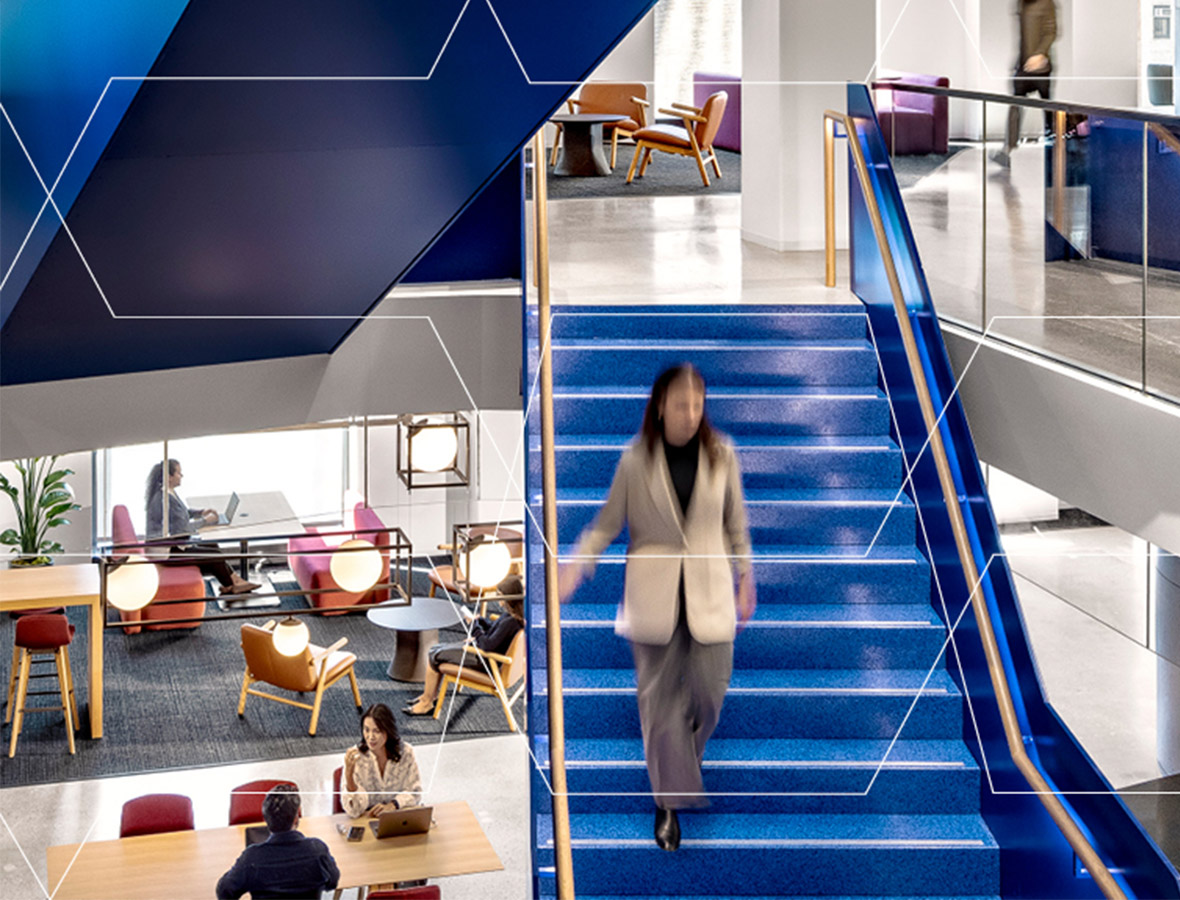
For media inquiries, email .
